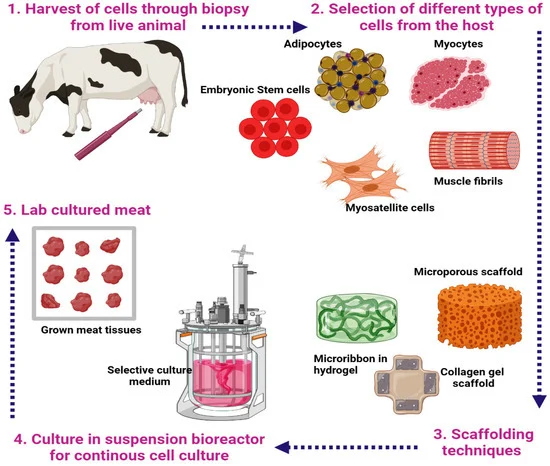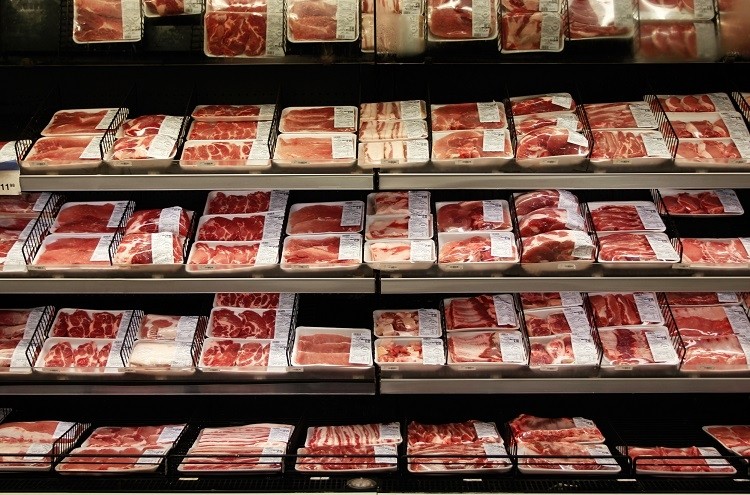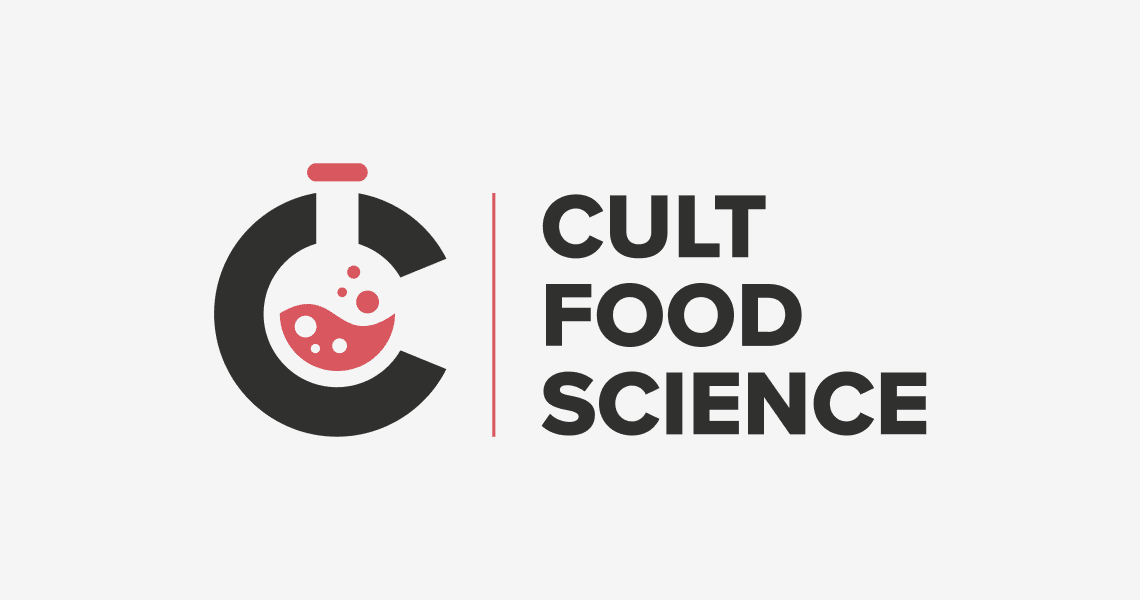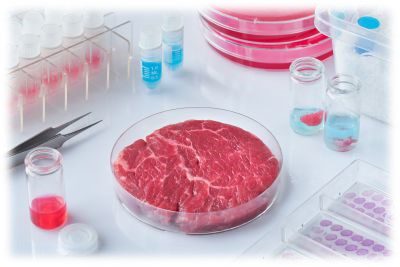What is cultivated meat?
Cultivated meat, also known as cultured meat, is genuine animal meat (including seafood and organ meats) that is produced by cultivating animal cells directly. This production method eliminates the need to raise and farm animals for food. Cultivated meat is made of the same cell types arranged in the same or similar structure as animal tissues, thus replicating the sensory and nutritional profiles of conventional meat.
Dutch scientist Mark Post unveiled the first cultivated meat burger on live television in 2013. Two years later, the first four cultivated meat companies were founded. The industry has since grown to more than 60 companies on 6 continents, backed by $450M+ in investments, each aiming to produce cultivated meat products. Dozens more companies have formed to create technology solutions along the value chain.
How is cultivated meat made?

The manufacturing process begins with acquiring and banking stem cells from an animal. These cells are then grown in bioreactors (known colloquially as cultivators) at high densities and volumes. Similar to what happens inside an animal’s body, the cells are fed an oxygen-rich cell culture medium made up of basic nutrients such as amino acids, glucose, vitamins, and inorganic salts, and supplemented with proteins and other growth factors.
Changes in the medium composition, often in tandem with cues from a scaffolding structure, trigger immature cells to differentiate into the skeletal muscle, fat, and connective tissues that make up meat. The differentiated cells are then harvested, prepared, and packaged into final products. This process is expected to take between 2-8 weeks, depending on what kind of meat is being cultivated. Some companies are pursuing a similar strategy to create milk and other dairy products.
What are the benefits of cultivated meat?

By nature of its more efficient production process, cultivated meat is expected to have a variety of benefits over conventional animal agriculture. Prospective life cycle assessments indicate that cultivated meat will use significantly less land and water, emit fewer greenhouse gases, and reduce agriculture-related pollution and eutrophication.
According to a 2020 publication in Nature Food, commercial production is expected to occur entirely without antibiotics and is likely to result in fewer incidences of foodborne illnesses due to the lack of exposure risk from enteric pathogens.
Over the next few decades, cultivated meat and other alternative proteins are predicted to take significant market share from the $1.7 trillion conventional meat and seafood industry. This shift will mitigate agriculture-related deforestation, biodiversity loss, antibiotic resistance, zoonotic disease outbreaks, and industrialized animal slaughter.
When will cultivated meat make it to market?

As of mid-2020, several leading cultivated meat companies are transitioning to pilot-scale facilities that will manufacture the first wave of commercialized products following regulatory approval. The Singapore Food Agency approved the world’s first cultivated meat product for sale in December 2020. Shortly thereafter, the 1880 restaurant in Singapore marked the historic first commercial sale of the approved cultivated chicken bite produced by California-based Eat Just.
Further scaling production to significantly larger facilities than what currently exists will require solving an array of complex challenges. These challenges range across four key areas: cell lines, cell culture media, bioprocess design, and scaffolding.
Solving these challenges and propelling the cultivated meat industry into maturity will require an influx of funding from both the public and private sectors. New courses, research centers, and training programs for scientists, as well as policy work and regulatory action will accelerate progress.
The field will also need new companies, contributions from existing life science companies, and openness to collaboration from existing cultivated meat companies. Many new career opportunities will need to be filled by talented scientists, businesspeople, and other contributors along the value chain.
The Review
points
Review Breakdown
-
test
















